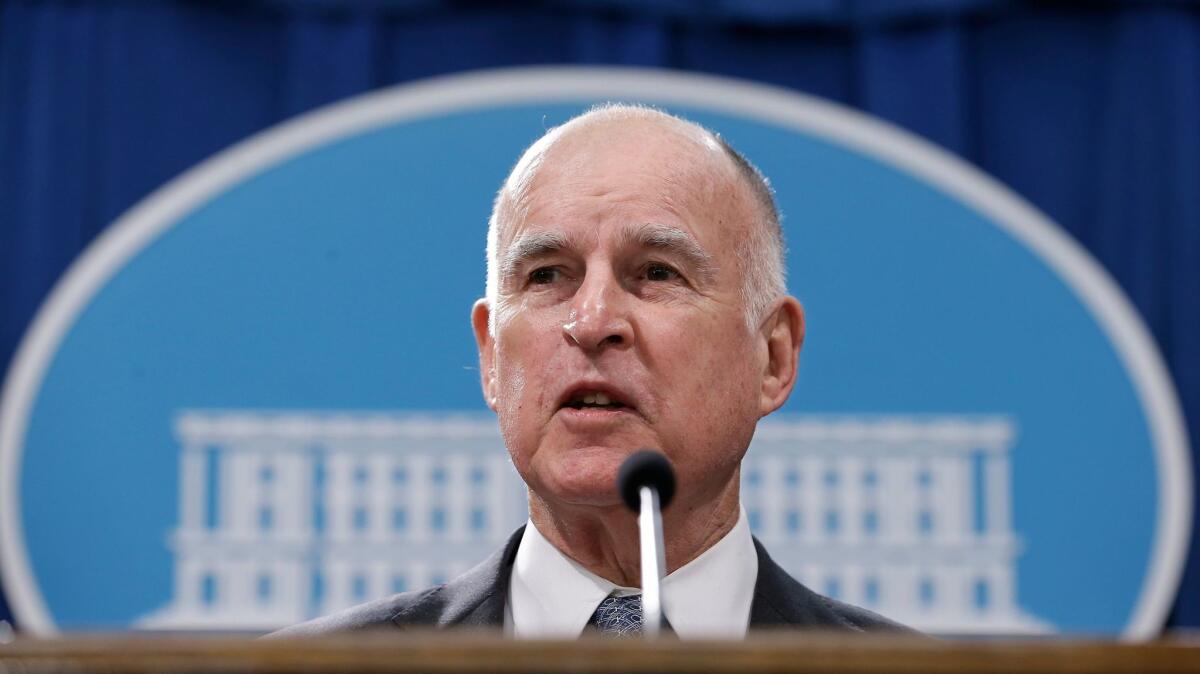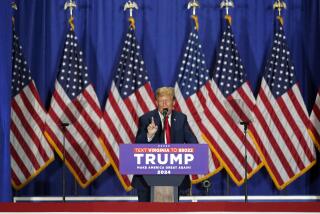Editorial: Jerry Brown’s second chance to remake California’s Supreme Court

California Supreme Court Justice Kathryn Mickle Werdegar’s announcement that she will retire in August gives Gov. Jerry Brown a chance to complete a sweeping remake of the court. Now nearing the conclusion of his second stint as governor, Brown already has appointed three of the court’s current seven members. He is likely to leave office in January 2019 having named a majority of the state’s high court justices.
The situation invites a comparison with the U.S. Supreme Court and next week’s Senate confirmation hearings for Neil Gorsuch, President Trump’s choice to fill the late Justice Antonin Scalia’s seat — and exposes the vast difference between the state and federal judicial systems.
In Washington, many Democrats are still fuming over the Senate’s refusal to consider President Obama’s appointment of Merrick Garland and, in so doing, prevent the leftward recalibration of the court’s political and philosophical balance. Gorsuch’s confirmation could well lock in a right-leaning court for another generation, even if Trump never gets to make another appointment.
Brown’s stamp on the California Supreme Court seemed similarly unassailable in 1977 when he made his first three appointments, two years into his first tenure as governor. He named seven members that go-round — including the court’s first female, African American and Latino justices.
Unlike the federal system, California does not have lifetime judicial appointments.
But unlike the federal system, California does not have lifetime judicial appointments. Every Supreme Court and Court of Appeal justice comes up for voter approval in the first gubernatorial election after the appointment. There are additional retention elections every 12 years after that.
In 1986, voters rejected three of Brown’s appointees: Chief Justice Rose Bird and Associate Justices Joseph Grodin and Cruz Reynoso. The highest-profile reason was the justices’ votes to overturn death sentences — after voters had made clear repeatedly that they favored keeping the death penalty — but business interests also worked to oust the justices because of rulings they saw as being too favorable to labor.
The ensuing vacancies allowed Gov. George Deukmejian to put his own, more conservative, stamp on the court. Death sentences were upheld, and many rulings tilted back toward business interests.
Still, the California Supreme Court that was dominated by Republicans until Brown’s 2010 return to the governorship generally retained a moderate stance, with the occasional notably conservative or liberal rulings. It was such a court that struck down state laws barring same-sex marriage in 2008.
Voters rebelled against that ruling, but did not take it out on the justices. Instead, they adopted a constitutional amendment that overrode the ruling and again banned same-sex marriage in California. A federal appeals court struck down the ban in 2012.
Since returning to office, Brown is often described as less brash, more politically savvy and more moderate than he was as governor in the 1970s and early 1980s. But his Supreme Court appointments are as iconoclastic as ever, rejecting the traditional route to the court — from the trial bench and then the Court of Appeal — in favor of legal scholars and litigators.
His first pick was Goodwin Liu, an attorney and legal scholar who — like Garland — was denied a confirmation hearing for a federal judgeship. Then came Mariano-Florentino Cuéllar and Leondra Kruger. All had worked in government, and all were graduates of Yale Law School — just like Brown.
Voters have retained Liu and Cuéllar. Kruger comes up for retention next year.
So has Brown modified his appointments to be more appealing to the public? The justices may be ideologically similar to his earlier appointments, but the world has changed and many of the issues with them. Just as the Deukmejian court was not uniformly conservative, Brown’s has not been consistently liberal. Meanwhile, the electorate has shifted to the left, although voters still want to keep the death penalty, as they showed last year in again defeating a ban.
To those who follow the federal system, the California way of appointing Supreme Court justices seems unduly political and just plain odd. Voters gave Brown a chance to remake the Supreme Court by electing him in 1974. They took it away in 1986, and now they have given it back to him. The next chapter will be his nomination of Werdegar’s successor. And then, again, the voters will have their say.
Follow the Opinion section on Twitter @latimesopinion and Facebook
More to Read
A cure for the common opinion
Get thought-provoking perspectives with our weekly newsletter.
You may occasionally receive promotional content from the Los Angeles Times.






